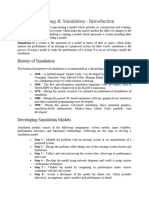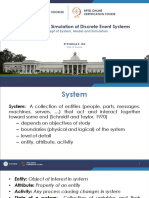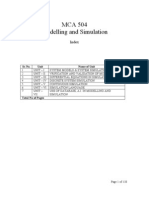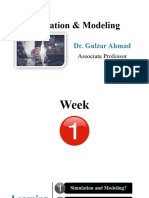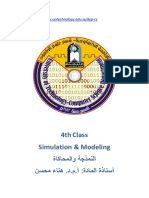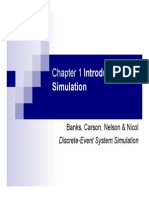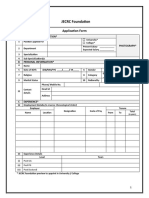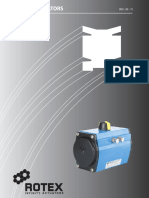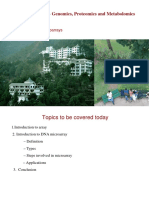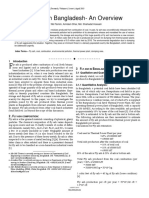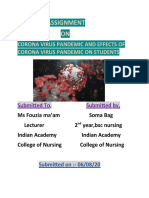0% found this document useful (0 votes)
26 views3 pagesSimulation and Modeling Assignment
The document defines simulation as a technique for imitating real-world processes to analyze behavior under various conditions, while modeling is the abstraction of these systems into manageable formats. It compares Discrete-Event Simulation (DES), which focuses on event-driven state changes, with Continuous Simulation, which models systems with continuous state changes. Each type has distinct characteristics, advantages, and challenges, along with specific tools and use cases in various fields.
Uploaded by
Panashe MatiangaCopyright
© © All Rights Reserved
We take content rights seriously. If you suspect this is your content, claim it here.
Available Formats
Download as DOCX, PDF, TXT or read online on Scribd
0% found this document useful (0 votes)
26 views3 pagesSimulation and Modeling Assignment
The document defines simulation as a technique for imitating real-world processes to analyze behavior under various conditions, while modeling is the abstraction of these systems into manageable formats. It compares Discrete-Event Simulation (DES), which focuses on event-driven state changes, with Continuous Simulation, which models systems with continuous state changes. Each type has distinct characteristics, advantages, and challenges, along with specific tools and use cases in various fields.
Uploaded by
Panashe MatiangaCopyright
© © All Rights Reserved
We take content rights seriously. If you suspect this is your content, claim it here.
Available Formats
Download as DOCX, PDF, TXT or read online on Scribd
/ 3


